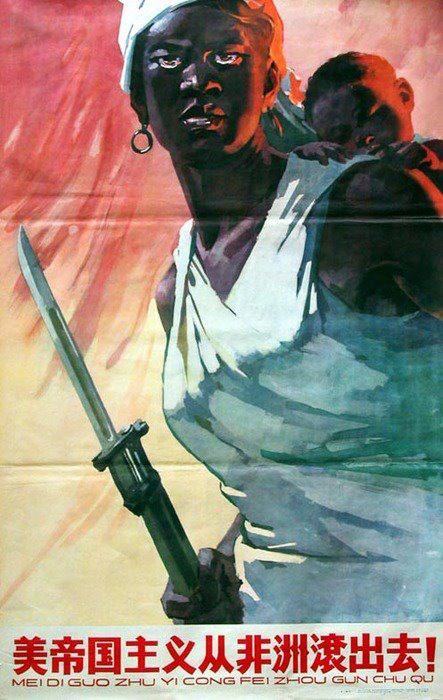Good Intentions Do Not Always Do Good
Posted on December 16, 2017
“In such attempts at pseudo merging and trans-feral we are only able, imperfectly darkly, to visualize ourselves. What would happen to us if we could truly sympathize with others, feel with them, suffer for them…If from every unfortunate, from every victim, there remained even a single atom of his feelings, if thus grew the inheritance of the generations, if even a spark could pass from man to man, the world would be full of raw, bowel-torn howling.”
– Stanislaw Lem1
One question that’s been haunting me for a long time is that how do I know the work I’m doing has actual social values and is not just a self-fulfilling process? Sometimes “good heart”, sympathy, sentimental emotions and enthusiasm prevent people from thinking constellationally.

(Old Chinese Poster: American Imperialism Get out of Africa)
Take the Invisible Children project as an example. The video of Kony 2012 started with good storytelling. Everything feels fine until the moment when the narrator in the video shows his son pictures of two black men and tells him who is the evil and who is the friend, started to question if this little boy would develop a nuanced sense or definition of others. As the movie goes on, I gradually feel that something is not right: the story being told in this video so well-articulated in a way that is full of blind enthusiasm which was largely driven by social media, celebrity and young college students. The video is imposing a stereotyped image of African countries, especially Uganda, to people broadly.
Kony 2012 and the initiative Invisible Children self-indulgently promises the sufferings that Ugandan children are undergoing due to the evils of Joseph Kony will end once the whole world knows what’s happing to children in that country, and thus we have the power. If there is one thing Invisible Children is right about, it’s that ignorance is blinding2. It seems that people in the Kony 2012 movement believes that the world is nothing but a problem to be solved by enthusiasm.
There is so much more to doing good work than making a difference. As a designer, I do not believe design practitioners can change the world. Dinaw Mengestu said in his article “Not a Click Away: Joseph Kony in the Real World” that if we care, then we should care enough to say that we need to know more and we don’t have an easy answer, but that we’re going to stay and work until we find one. You can’t put that on a t-shirt or a poster. You can’t tweet that, but you can live by it2.
Although Kony2012 is highly problematic, but it helped us discovered probably what is needed more pressingly in these African countries: a more equitable civil society, more robust democracy, and a fairer system of justice3.
So, in the case of Joseph Kony and his army, what can we do?
Instead of using enthusiasms that are driven by sentimental emotions, we should help local community to build its own agency to solve its own problems. Local problems have to be solved locally, and changes will happen if we build the right lattice for them to emerge. In terms of solving wicked problems, bottom-up strategy, rather than top-down interventions, will actually work. In the book Thinking in System, Donella Meadows introduces the concept of “event – behavior – structure” character of a system. According to Meadows, system structure is the source of system behavior; system behavior reveals itself as a series of events over time. By looking at events, it’s impossible for one to understand the behaviors of a system, let alone to change the behavior of the system; if analysis happened on the behavior level, one might be capable to predict near-term performance since behaviors reveal system flows. In order to understand a system, one need to dig into the structure level because that’s where behavior and events flow out4.
It’s not that there is nothing we can do to stop bad things from happening, or stop things from getting worse, it’s how we do it. Apart from the need to know about the context as much as possible, I believe a designer’s role in tackling complex problems is with a system thinking approach to set up feedback rules, relationships and structures.
Yuxin Cheng
Reference
- Lem, Stanisaw, and Michael Kandel.His Master’s Voice. Northwestern University Press, 2006.
- Mengestu, Dinaw. “Not a Click Away: Joseph Kony in the Real World.”Warscapes, 22 Feb. 2016, www.warscapes.com/reportage/not-click-away-joseph-kony-real-world.
- Cole, Teju. “The White-Savior Industrial Complex.”The Atlantic, Atlantic Media Company, 21 Mar. 2012, theatlantic.com/international/archive/2012/03/the-white-savior-industrial-complex/254843/.
- Meadows, Donella H., and Diana Wright. “Chapter Four: Why Systems Surprise Us.” Thinking in Systems: a Primer, Chelsea Green Publishing, 2015.